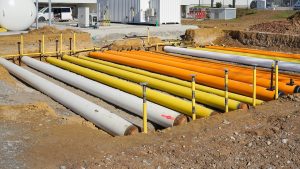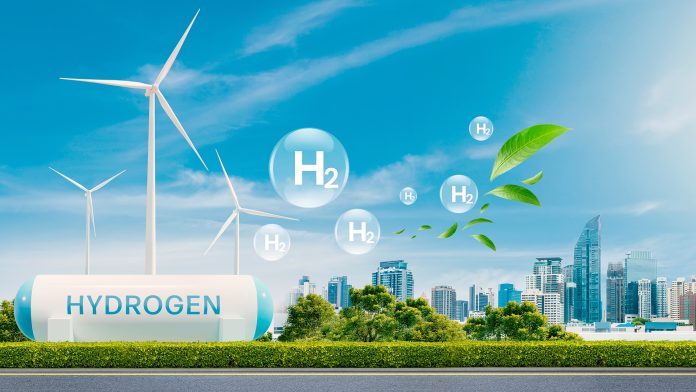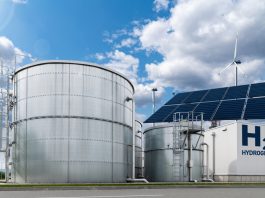Jorgo Chatzimarkakis, CEO of Hydrogen Europe, stresses that Europe must be competitive in its electrolyser technology development to remain a leader in the global hydrogen space.
Water electrolysis is the backbone of a clean hydrogen economy. With the sector developing at a fast rate, we are seeing the growth of the electrolyser technology developers across Europe and globally. How can Europeans fend off the growing competition from the US and China in the electrolyser space?
Total installed water electrolyser capacity reached 1.4 GW at the end of 2023, almost double the installed capacity at the end of 2022. According to the International Energy Agency’s (IEA) Global Hydrogen Review 2024 report, it could reach 5 GW by the end of 2024. While this is hugely encouraging, the same report highlights that China made up 80% of 2023’s new capacity, with Europe lagging behind on 12%. Although it is projected to grow its global market share to 15% by the end of this year, it is still far from where we would like, and arguably deserve, to be.
Europe has led the way in the research and development of hydrogen technologies over the years. Much like with solar photovoltaic (PV) two decades ago, we are now at risk of losing out on the benefits of this diligent work which will provide decarbonisation tools and new economic opportunities to all. By reflecting on our failure to preserve a healthy European solar PV manufacturing base and accepting that the same will occur once more with hydrogen unless we act, we can not only right the ship on this technology but set the framework to continue doing so as European innovators remain to do what they do best.
Europe’s biggest disadvantage compared with Chinese electrolysers is still the costs of manufacturing, which have increased significantly in recent years. As a recent BNEF report stated, the cost of manufacturing alkaline electrolysers has risen by 50% since 2022 due to broader cost coverage, general inflation, and slower market scaling. Currently, alkaline electrolysis systems cost more than $2,000 per kilowatt (kW) in Europe and the US, compared to $480-$720/kW in China. Cheaper labour, different supply chains, an overestimation on yields and, mostly, indirect subsidisation of projects (e.g. zero-interest loans, free land allocation), all help to push down the costs.

This skewed playing field makes it impossible for European companies to compete on price alone. Market dynamics for clean tech should therefore opt for products capable of justifying their green premium: projects should aim for the best-in-class technology, that operate safer and more efficiently, then ultimately with scale delivering a lower cost for the hydrogen produced over the long term. To take this route, the European Union (EU) must act proactively and employ several strategies. Firstly, the EU should push for the enforcement of European and World Trade Organization (WTO) multilateral principles, such as anti-dumping measures and market probes, to deter unfair competitors. But there is plenty we can do within our own institutions.
A European Green Deal
The next European Commission, led by President von der Leyen in her second term, appears firmly committed to improving EU competitiveness and advancing this ambition hand-in-hand with our energy transition goals. The Green Deal Industrial Plan (GDIP) is a wide-ranging, multi-faceted plan to enhance the competitiveness of Europe’s net zero industry and accelerate the transition to climate neutrality. The focus is on creating a more supportive environment for the industry, which will allow it to flourish amid growing competition from the US and China. What that means in practice is simplifying regulation, increasing state aid, building up the supply chain, and setting world-leading standards for net zero technologies manufactured in Europe. Many of the ambitions of the GDIP are coherent with the recommendations of the recent reports by Mario Draghi and the European Court of Auditors – especially those which urge the simplification of the regulatory landscape in order to facilitate faster investment into key sectors.
The Net Zero Industry Act (NZIA) and Critical Raw Materials Act (CRMA) are two key pieces of legislation under the umbrella of the GDIP, as is the upcoming electricity market reform (EMR). Under NZIA, the Commission wants to ensure that, by 2030, at least 40% of EU annual deployment needs for clean technologies should be established in Europe. Successful implementation of these initiatives by the new Commission will pay dividends for the hydrogen economy and the wider clean tech industry. NZIA commits to preserving manufacturing capacity in Europe, CRMA is focused on securing the key materials and resources needed to build out that capacity, and the EMR will open up the electricity market towards a more circular and technology diverse framework – allowing for hydrogen to leverage its long-term storage and transport capabilities to help the energy transition for the entire EU.
Resilience across the board
When it comes to hydrogen technology specifically, we expect the new Commission to be interested in promoting further research into several aspects. There will likely be an emphasis on more electrolyser innovation making it to market. Firstly, maintaining the superior safety profile of European models compared with their international counterparts – something which should be highlighted more often – while increasing their performance. Secondly, there is plenty of work going into thrifting of materials too: like developing new products with less, or more efficient, use of critical raw materials, and recycling components in an effort to improve the resilience of European supply chains. These efforts are critical to our ambitions. Finally, diversification of hydrogen production pathways will also be important – waste-to-hydrogen, pyrolysis, and other pathways will be crucial to increasing hydrogen supply while contributing to decarbonisation goals.
Resilience is a word we should hear a lot more of in this next mandate when it comes to the energy transition and hydrogen’s role in it. The steps concerning reuse and recycling of materials, outlined in the paragraph above, show how resilience will be a key component of the clean technology value chain.
It is also relevant to maintaining local production capacity. Following concerns of Chinese penetration into the European market, a new rule for the upcoming second auction of the European Hydrogen Bank states that, cumulatively, no more than 25% of the components of electrolyser stacks with surface treatment or cell unit production or stack assembly may be sourced from China.
Resilience can also be applied to the energy network itself – hydrogen storage improves overall resilience by capturing renewable power that would otherwise be curtailed during periods of high generation and can be converted back into electricity during periods of low generation. This solves the intermittency issue of renewable energy while offering a longer-term alternative to battery storage, thereby reducing grid congestion.
More innovation
Legislative initiatives and resilience measures aside, the onus is certainly on European technology developers to continue to innovate to stay ahead of the competition and deliver price reductions and efficiency gains.
To contribute to the resilience conversation, we need more work into finding common materials for electrolysers and the improvement of precious or scarce materials loadings for catalysts. We need increased industrialisation and automation of processes to improve output. In general, we should continue to develop and improve the many electrolyser technologies in existence – proton membrane exchange (PEM), alkaline (AEL), solid oxide (SOX), and anion membrane exchange (AEM). Each come with their own advantages that will be applicable to different use cases. For example, AEM is more efficient than alkaline and cheaper than PEM while avoiding the use of platinum group metals.
Many companies are working hard on exactly this, and it is important that they receive the necessary regulatory and financial support from their countries and the EU. The maturation and scale up of these different production technologies will provide consumer choice, drive costs down as best practices develop, and provide a competitive advantage.
The EU is committed to the energy transition and to improving competitiveness. The key to both of these goals is clean technology, of which electrolysis technology is a crucial component. Improving regulation, taking steps to improve overall resilience, and continued innovation will unlock Europe’s potential as a world-leading clean technology provider. With hydrogen technology, we still have the chance to preserve a substantial market share – but we must act now!
Please note, this article will also appear in the 20th edition of our quarterly publication.










